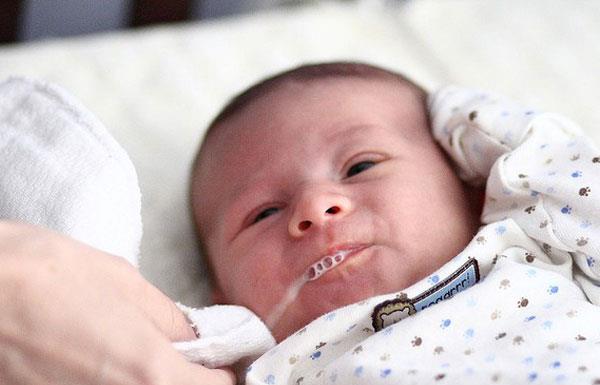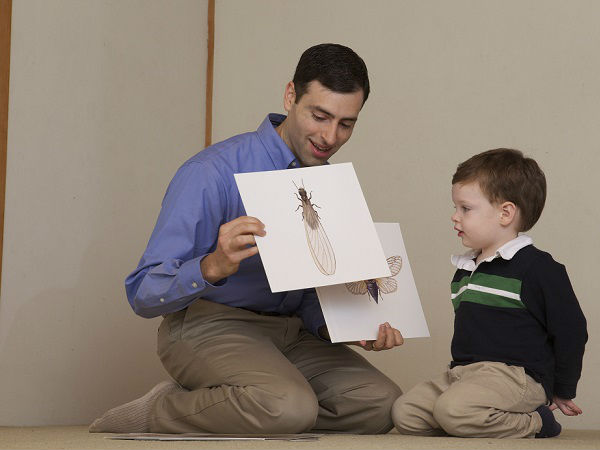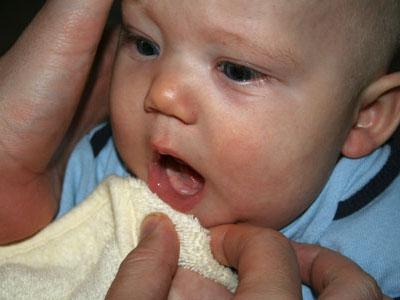Children wheezing often will make mothers worry about asthma or other respiratory diseases. However, when a combination of symptoms such as vomiting and wheezing appear, it can be digestive and allergic diseases.
content
Cause vomiting, wheezing
How to treat when the baby is milky and wheezing
The phenomenon of spitting up milk and wheezing is what makes mothers feel anxious and often has difficulty in determining the exact cause of the disease and finding the best management. Could it be respiratory, digestive, or something else?
Cause vomiting, wheezing
Infants 1-2 months old have a weak digestive system, the valves in the stomach are not working properly, so when suckling, babies easily swallow gas into the stomach. This amount of "excess" not only makes the baby easier to fill, but also makes the baby often spit when the mother is lying on her side. This phenomenon is quite common. If it's just the baby spitting up milk in the first few months after birth , you don't need to worry too much.
If your baby has a spitting up phenomenon with wheezing like a stuffy nose, your baby is likely to have one of the following two diseases:
Gastric juice reflux into nasopharynx
This disease will increase the secretion of viscous sputum in this area, causing symptoms of vomiting and wheezing in the baby . The cause of the disease is that the baby's stomach is both horizontal and small. Babies often indulge in suckling without knowing that their stomach can not hold.

Babies with choking and wheezing can be a combination of digestive ailments and allergies
If the mother does not pay attention to the amount of breastmilk in the baby's meal, it will increase the pressure on the baby's digestive system. Because then the stomach will contract to push down the intestines, but when overloaded, the milk must flow upwards. If the milk leaks out of the mouth, it is a gagging phenomenon, but if the stray milk passes through the respiratory tract, it stimulates the production of mucus, the mother will hear wheezing.
Children with atopic allergy
This causes increased secretion and stagnation of viscous sputum in the nasopharynx, causing symptoms of wheezing, making the baby more or less stuffy, breathing through the mouth drying the mucous membrane of the throat, so it is easy to stimulate the vomiting reflex, causing the baby to vomit. milk.

Babies choking on milk: How to manage and prevent Physiological vomiting is a very normal phenomenon in babies in the first months. However, if you do not pay attention when your baby chokes on milk, the baby's airway can be blocked by milk and endanger his life. Mom should immediately refer to information on how to handle and prevent below!
How to treat when the baby is milky and wheezing
According to ENT specialists, what you need to do in this case is to wash your baby's palate, nose and throat well with normal saline 3-5 times a day. How to do it: Put your baby on his or her side and put the salt water in the upper hole until the salt water comes out in the hole below, and switch sides to do the same for the other side.
During the time the baby has symptoms of the disease the mother needs to repeat this procedure as many times as possible. If the disease does not show signs of remission, you should send your baby to the pediatric department of the ENT department for a careful examination and the doctor may prescribe him / her to use some antiallergic drugs, expectorant or anti-sputum drugs. reflux consistent with the child's disease.

If your baby is vomiting and wheezing frequently, it is necessary to see a specialist
For babies who often vomit breast milk , attention should be paid to the suckling position. When breastfeeding, sit on a bed or a chair that is high enough for both feet to touch the ground firmly. Do not let the baby completely back or face the mother's lap, but let the young person lean 30-45 degrees above the normal baby, breastfeed the right breast first and stop the breast on the left breast and remain in this position for 10 - 15 minutes to change position.
If the baby is bottle-feeding, mothers must keep the bottle on a reasonable tilt not too standing, making the baby suckle quickly or horizontally, causing the baby to suck air into the abdomen. In addition, mothers also note that choosing a nipple with a small hole makes the baby suck more slowly, when breastfeeding, it is also important to pay attention to not press hard on the mouth to make the milk go down faster.
When sleeping, mothers should let babies lie on their knees slightly higher than shoulder width, change sides often, do not let them lie on their side forever.
If the phenomenon of the baby's milk emitting and wheezing occurs in a short time but often, parents should take the baby to the ear, nose and throat specialist to see the doctor carefully and have timely treatment. time, efficiency. Do not neglect to let the child's condition become more important will slow the baby to gain weight, leading to malnutrition and stunting.














